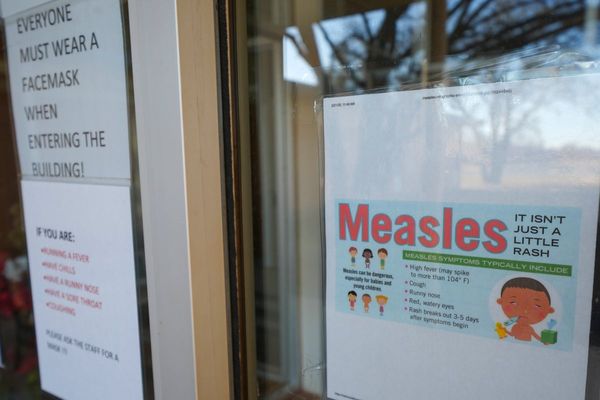More than half of India’s population, living in 344 districts, face high or very high health vulnerability induced by climate change. People are increasingly being exposed to the effects of climate change, such as prolonged summers, heavy and unpredictable rains, floods and droughts, and rising sea levels and melting glaciers. As a result, they fall ill more often, face a greater risk of future ailments, lose livelihoods, get pushed into poverty, and are forced to migrate. People fight and try to adapt to these changes and prepare themselves better for future events. Vulnerability is a vector produced out of the dynamics between exposure and sensitivity on the one hand and people’s ability to adapt or fight on the other.
However, the same exposure may not have the same health consequences for everyone. People who are exposed to higher green cover, have better living conditions, education, secured work, better social safety nets and resilient health systems would be able to adapt to the changes and mitigate the consequences better. People who live on the margins, whose livelihoods are not secured, and who have to pay when someone in the family falls ill will be more vulnerable to these changes.
Also Read | Recognising the impact of climate change on health
Though there are certain universal aspects of climate change, the nature of exposure is diverse and localised — within a State, different regions or districts have different levels of exposure. As consequences also vary, vulnerabilities differ. While there must be certain universal strategies, adaptation and mitigation efforts and strategies must be localised.
In a recent paper published in Climatic Change, we draw on the vulnerability assessment framework introduced by the Fourth Assessment Report of the Intergovernmental Panel on Climate Change to measure district-level exposures, sensitivities, adaptive capacities (ACs) and health vulnerabilities. We carried out our analysis for all 640 districts of India (Census 2011) and used 50 indicators — 14 for exposure, 20 for sensitivity, and 16 for ACs — from 8 national data sources to construct separate indices for each of the three vulnerability components.
Our findings suggest that 298 districts have high or very high levels of exposure. These districts house around 52% of India’s population. Almost 30% of India’s population living in 184 districts are faced with very high and high sensitivity. Around 153 districts, where a fifth of India’s population lives, have moderate and low AC.
The study also helps us identify the underlying causes of vulnerability which is essential in formulating appropriate multi-sectoral policy responses. For example, increasing public expenditure on health could have a significant impact on reducing out-of-pocket expenditure. Results suggest that poorly developed primary healthcare remains a major factor for high vulnerability in some districts which report high infant mortality rates and poor child health indicators. Robust primary healthcare has shown promise in effectively addressing preventable causes of mortality and morbidity in many States such as Kerala and Tamil Nadu. Primary healthcare systems also have the potential to address the impending burden of non-communicable and communicable diseases, which is likely to aggravate as a result of climate change. By facilitating early disease diagnosis, primary healthcare can reduce the burden of high-cost tertiary care.
Addressing inequalities in the distribution of various social determinants of health could reduce health vulnerability. Providing sustainable livelihood opportunities, improving working conditions, providing people with social safety nets, and improving the education status of the population and its employability could contribute to reducing sensitivity and enhancing ACs.
Tractable policy action needs a robust, dynamic data system. Our current health system data architecture is weak and incomplete. Institutions with access to data do not often collaborate or share data in public. People within the system hardly trust the data they themselves generate and rarely put the data to use. Further, there is limited compliance from the private sector and a lack of appreciation within policy institutions for evidence-based policymaking.
The climate crisis calls for a radical rethinking of the developmental paradigm. However, none of this can be achieved if institutions of local self-governance are not engaged with the climate and health agenda. The health system, too, should be made more accountable to the people.
Map 1 | The map shows vulnerability index values for 640 districts (0-0.249 indicates low, 0.25-0.49 indicates moderate, 0.5-0.749 indicates high, and 0.75-1 indicates very high vulnerability).
Charts appear incomplete? Click to remove AMP mode
Data show that 38 districts have very high vulnerability, 306 districts have high vulnerability, 278 districts have moderate vulnerability, and 18 districts have low vulnerability. The 344 districts with very high and high vulnerability house 56% of India’s population.
Table 2 | The table shows the top 5 and bottom 5 districts in terms of vulnerability.
States with districts in the top 10% vulnerability range are Uttar Pradesh, Rajasthan, Madhya Pradesh, Jharkhand, Haryana, Himachal Pradesh, Punjab, Uttarakhand, Jammu and Kashmir, and Arunachal Pradesh. U.P. and Rajasthan alone have 37 and 15 districts, respectively, in the top 10% vulnerability range, M.P. has 3 districts, and Jharkhand and Haryana have 2 each. Punjab, Uttarakhand, J&K, Himachal, and Arunachal have one district each in this category.
Indranil is Professor, at the School of Government and Public Policy, OP Jindal Global University, Sonipat
Divya is a doctoral candidate at the School of Government and Public Policy, OP Jindal Global University, Sonipat
Source: Climatic Change
Also read: Data | Climate finance adds another layer of inequity to climate change
Listen to our Data podcast: Is the Environmental Performance Index really faulty? | Data Point podcast







